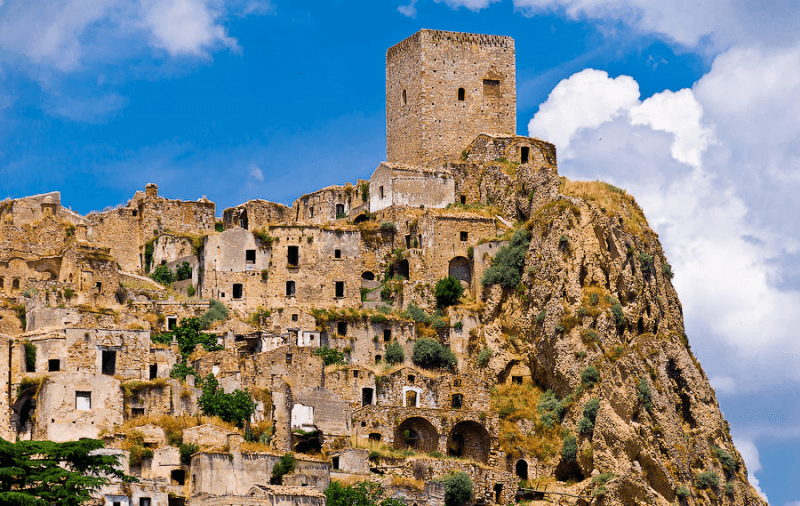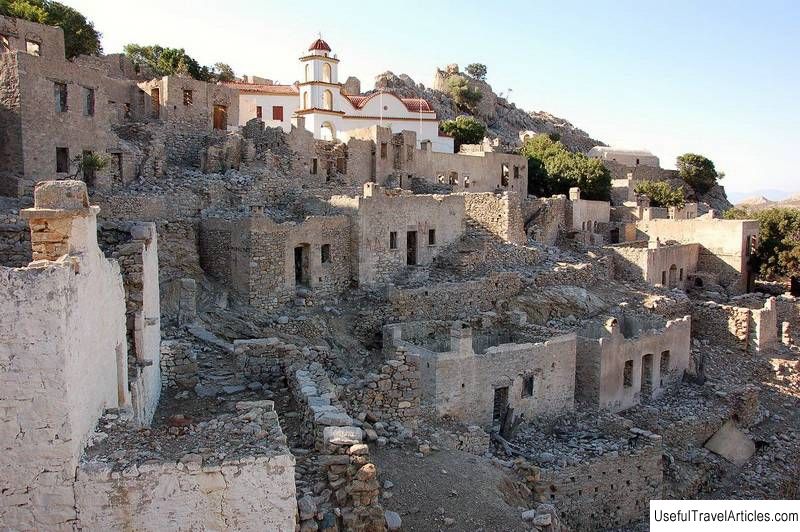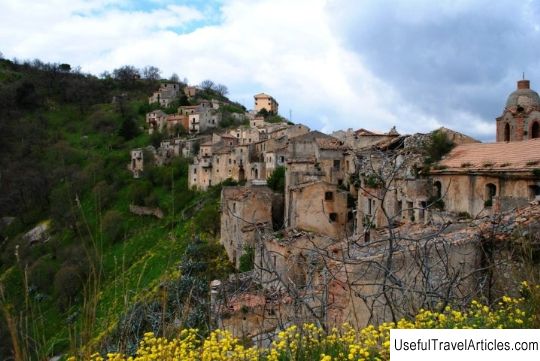Ghost town of Kraco (Italy)
Rating: 8,7/10 (6734 votes)   Ghost town of Kracko In the south of Italy, in the province of Basilicata, there is a place that has been crossed out from all tourist guidebooks for half a century, but is widely known all over the world. The small town of Krako, standing on a hill of limestone, does not officially exist as a toponym, but more than 500 people live here, who decided to stay in this city until the last. Kracko's history began in the 18th century, although official There are very few historical documents confirming this. According to these data, the settlement was founded by the Greeks, away from major trade routes, the city was supposed to become a reliable shelter from sea robbers and numerous wars of the early Middle Ages. At this, the first stage of the city's history ends for almost 3 centuries, when the southern settlement on the rock is first mentioned in the official chronicle.  The ghost town of Kracko A small note dating from 1060 tells about the city of Krakulum, located in the center of a large plateau. The name of the city translates as 'plowed field', apparently by analogy with the territory surrounding the settlement. Over time, the archaic Latin form of the name of the city was lost, and the city began to be called shorter and more conveniently - “; Kracko. The name of Archbishop Arnold, who brought the Roman Catholic confession to the city, is also attributed to the same period. At the expense of the Vatican money, the well-fortified city of the Italian south began to grow rapidly, as far as the small area allowed. Two centuries later, King Frederick II captures the entire territory of the peninsula and annexes it to the Holy Roman Empire. All the monks of the Vatican began to lose their power here, which gradually passed under German rule, which at that time did not have the best relations with the Church.  Kracko's ghost town Despite some persecution of Catholics, Kracko continued to develop. It was during the reign of King Frederick II that a watchtower was built here, which now dates back simply to the 13th century, without an exact date. The fortifications of the city were strengthened every 10 years so that it was possible to fight off the Saracens and Turks encroaching on this territory. In the same era, the city, like many European settlements, experienced an epidemic of the black plague, from which a significant part of its inhabitants died, but by the 15th century about a thousand people already lived here. Until the 19th century, Krako remained a remote province south of Italy, exactly until those years when the most controversial era in its history began. In 1861, the volunteer army of Carmine Donatello Crocco entered the city – an odious bandit and fighter for the rights of Italian peasants and workers. For aristocrats, his troops until the beginning of the 20th century were a real curse, but the poor and disadvantaged Italians considered him a true hero, and still do, as evidenced by the various data of the Basilicata region.  The ghost town of Kracko The ghost town of KrackoFor several years, the people of Crocco patrolled the streets of the city, ensuring him complete freedom from paying taxes to Rome and other taxes that forced most of the population to live in poverty. This continued until the 1880s, when the royal army drove Donatello's gang out of the city, and Kracko himself gradually returned to the rhythm of life in the Italian backwater. Even then, the appearance of the city, judging by the archival footage, left much to be desired. Kracko's population was slowly aging, young people were leaving, but until the end of World War II, more than 2 thousand people lived here. There was practically no work in the settlement itself – all went to work in nearby towns and villages. After the fall of the Mussolini regime, the crime rate rose sharply throughout the region, the transitional years blackened the history of ancient Kracko with a series of murders, looting of houses and brutal rapes.  The ghost town of Kracko The earthquake of 1963 became the last straw in the patience of the inhabitants of the ancient city. Several strong tremors caused the collapse of the limestone rock, on which the foundation of the city was built. Several streets were destroyed in a matter of minutes, dozens of people were buried alive under a pile of stones and debris. The city authorities announced a mass evacuation of the population and the closure of the city register. Kracko officially ceased to exist. But, despite the mass exodus of the city's inhabitants, life in Kracko continued. People returning from temporary shelters began to occupy the empty houses and re-settle them. Not all have returned – at first it was a group of several dozen people, but gradually there were many more hermits. By the 1990s, the unofficial population of the city of Krako, extinct on paper, was 700 people. About the same number of people live here today. Many of them are happy to make contact with tourists and show the surviving sights of the city. The unique texture of Kracko in the form of medieval streets, fortresses and sidewalks paved with wild stone attracted filmmakers even in the years before the disaster. Since 1953, films have been filmed here, mainly with biblical themes due to the similarity of some of the city's streets with the ancient quarters of Jerusalem. The largest project filmed here was the film The Passion of the Christ. Mel Gibson. After the world furore of the film, British producers also became interested in this place, choosing Kracko to shoot several episodes of the film `` Quantum of Solace '' from the secret agent James Bond franchise.  Ghost Town Kracko The city is now surrounded by a truly apocalyptic landscape – due to the earthquake, threatening ravines and deep cracks in the ground formed in the soil. The abandoned area is seen immediately at the entrance, where there are road signs that have been lopsided from time to time, which no one is going to replace. Nevertheless, every summer a large number of cars can be seen around the nearest road - and ndash; guests make their own way to Kracko. Of the surviving attractions, you should definitely see the quarter of St. Lorenzo – one of the places of the city preserved in its original appearance. Here you can also see an old fountain of those. They were installed in cities not only for beauty, but also for the regular intake of drinking water. It is not recommended to come close to tower fortifications – they can collapse at any time, even under the weight of one adult.  The ghost town of Kraco It is also worth remembering that officially no Italian travel agency takes responsibility for tours in Kraco and even its surroundings. Each tourist arrives in the crumbling and sinking city at his own peril and risk. that officially no Italian travel agency takes responsibility for tours in Kraco and even its surroundings. Each tourist arrives in the crumbling and sinking city at his own peril and risk. We also recommend reading Casino Italy Topic: Ghost town of Kraco (Italy). |




